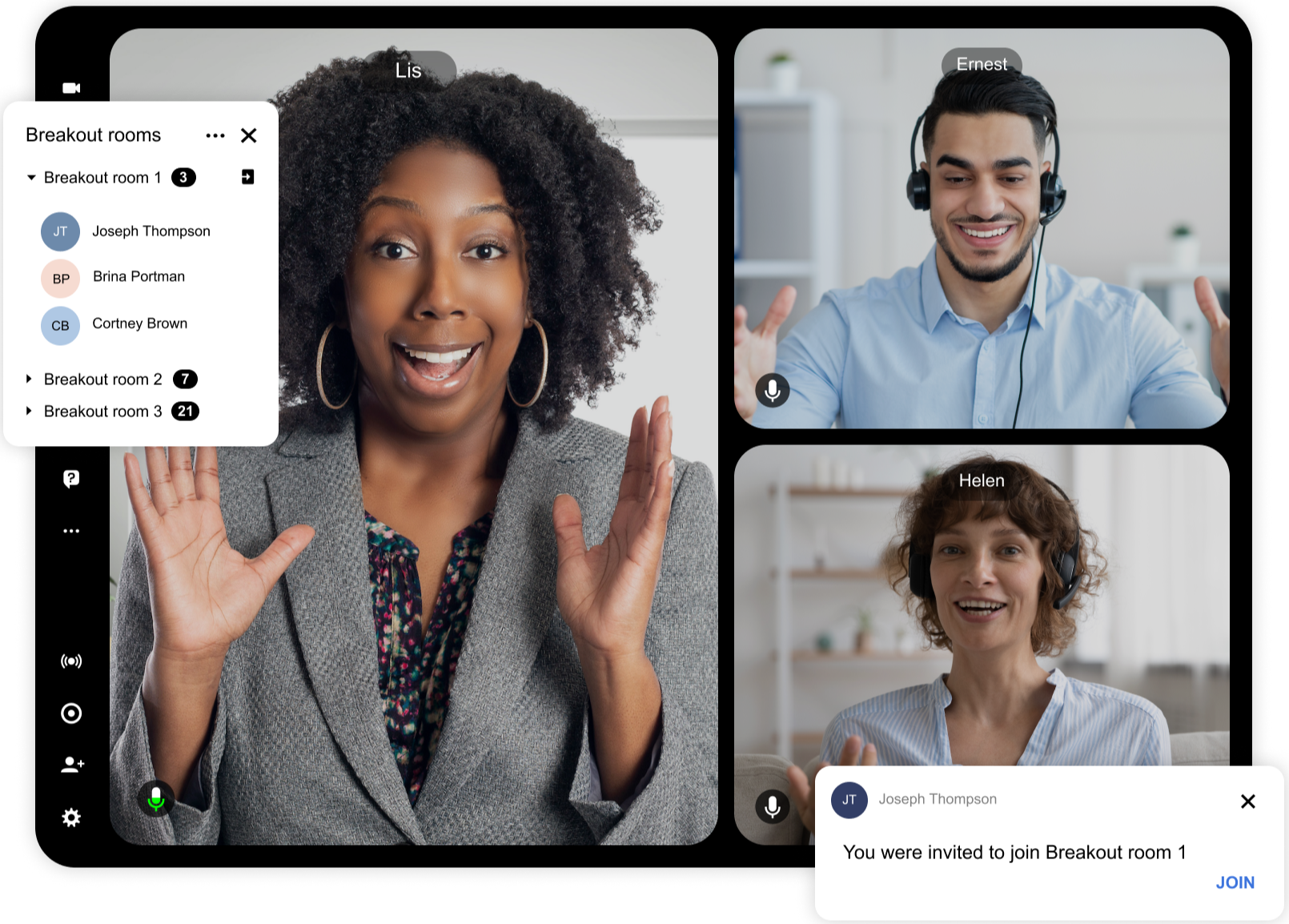Perfect Webinar Invitation: Strategies, Examples, and Best Practices
In today's digital landscape, webinars have emerged as a pivotal tool for businesses aiming to educate, engage, and convert their audiences. However, the success of a webinar largely hinges on the effectiveness of its invitation. A compelling webinar invitation not only informs but also entices recipients to register and attend. This article delves into the art of crafting the perfect webinar invitation, offering strategies, real-life examples, and best practices to enhance attendance rates.
Table of contents
- The importance of a well-crafted webinar invitation
- Key components of an effective webinar invitation
- Best practices for webinar invitations
- Conclusion
The importance of a well-crafted webinar invitation
A webinar invitation is more than just an announcement—it is the gateway to your event and a crucial factor in determining attendance rates. In a digital landscape where inboxes are flooded with promotional messages, your webinar invite must stand out and compel recipients to take action.

Webinar invitations have to answer what, where, who, and why. Let’s run through this idea as a framework.
1. What - Webinar on how to write a webinar invitation. (This is probably the webinar subject line of your invite)
2. Where - At [a link to a landing page], at a specific time.
3. Who - This is for people who do online marketing, or are event organisers for businesses, and even for educators.
4. Why - Learn about how to write effective webinar invitations from expert marketers for free, so that you can host webinars to market products, pitch ideas, and share knowledge.
The best webinar email subject lines cover the “what” portion implicitly, but sometimes the very first header covers the webinar subject lines, too.
The next, “who”, part is to address people who weren’t exactly already expecting the invite. If they read this far, they are supposed to know immediately “Oh, this applies to me!” or if it does not.
The actual body of the invite should be the “why” part of the invitation structure. This offers a justification for attending and describes the highlights and the scope of the webinar. The “why” implies a call to action, but should also end with an overt call to action.
Of course, this is just a rough sample event email invitation, but simply following this webinar invitation template will make writing webinar invites easier to compose, and it has a proven track record for invite success.
A well-structured webinar invitation accomplishes three essential objectives:
1. Inform: Clearly convey the key details
At its core, a webinar invitation must clearly communicate all the vital information attendees need to make an informed decision. This includes:
- Topic & agenda: What will be covered, and why is it relevant?
- Date & time: Clearly state the event time, including time zones for international attendees.
- Duration: Set expectations for how long the webinar will last.
- Speakers: Highlight their credentials and why they are worth listening to.
- Platform & accessibility: Let recipients know where and how they can join the session (e.g., via Zoom, Digital Samba, or another platform).
According to research from HubSpot, the top reason people register for a webinar is interest in the topic (27%), followed by convenience of the timing (24%). If these details are not communicated effectively, potential attendees may lose interest before even clicking "Register".
2. Engage: Highlight the value & benefits of attending
Your invitation should go beyond just listing details—it should sell the experience and demonstrate the value of attending. The key is to answer the "What’s in it for me?" question from the recipient’s perspective.
To achieve this:
- Clearly state the benefits of attending. Will they gain exclusive insights? Access cutting-edge research? Receive free templates or materials?
- Use compelling language that resonates with your target audience. Instead of "Join our webinar on marketing trends," say "Discover the top marketing strategies that will skyrocket your sales in 2025!"
- Leverage social proof by including testimonials from past webinar attendees or mentioning the number of registrants to build credibility.
Statistics show that 48% of attendees say that a webinar's relevance to their job or business influences their decision to attend. Tailoring the message to specific pain points makes the invitation more appealing.
Webinars are also a powerful tool for hiring. Companies can host recruitment pitch webinars to showcase their culture, values, and job opportunities to attract top talent. An engaging webinar invitation for a recruitment event should highlight what makes the company unique and why candidates should attend.
3. Prompt action: Encourage immediate registration
Even if a recipient is interested in the webinar, they may delay signing up, leading to lower conversion rates. The invitation must create a sense of urgency and ease of registration to drive immediate action.
Ways to achieve this:
- Use action-oriented CTAs such as "Secure Your Spot Now" instead of generic phrases like "Click Here to Register."
- Create FOMO (fear of missing out) by highlighting limited seats or exclusive content (e.g., "Only 100 spots available—reserve yours today!").
- Make registration effortless with a simple sign-up form that requires minimal information (name and email are usually sufficient).
- Follow up with reminder emails to keep registrants engaged and committed to attending.
A quick summary of the webinar can also improve engagement. Using an online summarizer, you can generate a concise preview of the session, making it easier for recipients to grasp the key takeaways at a glance. This helps potential attendees quickly understand why they should register without having to read long paragraphs.
Whilst crafting engaging webinar invitations, it's vital not to neglect the security of your email campaigns. Often, marketers become so engrossed in creating the perfect email copy that they forget the fundamental requirement of secure delivery. One of these is adopting policies like DMARC, an email authentication protocol which bolsters your communication against phishing and spoofing threats. This safeguards your well-considered invites and builds trust with your audience, ensuring your efforts are met with success.
If you're short on time or need help in creating the perfect message, you can use an AI email generator to quickly create well-written, personalised invitations. It’s helpful to think of your invite as looking for the right people to attend your webinar.
Key components of an effective webinar invitation
A successful webinar invitation should do more than just announce the event. It should persuade potential attendees to register by highlighting the value of the session, ensuring clarity, and encouraging immediate action. Below are the essential components that make up a high-converting webinar invitation.

1. Compelling subject line
The subject line is the first thing recipients see in their inbox, making it one of the most critical elements of your invitation. A strong subject line should be:
- Concise – Keeping it under 50 characters improves visibility, especially on mobile devices.
- Intriguing – It should spark curiosity or urgency to encourage the recipient to open the email.
- Value-oriented – Clearly communicate the benefit of attending.
Effective subject line examples:
- "[Webinar] Boost Your Sales: Proven Strategies for 2025"
- "Join Our Free Webinar on Cutting-Edge Marketing Techniques"
- "Limited Spots Available: AI in Marketing – Exclusive Insights"
- "You're Invited: The Future of Remote Work – Live Webinar"
Research indicates that emails with subject lines under 50 characters tend to have the highest open rates. Additionally, using brackets (e.g., “[Live Webinar]”) can improve engagement by drawing attention to the invitation.
2. Engaging banner image
A visually compelling banner image can immediately capture attention and set the tone for the webinar. It should:
- Include the webinar title to ensure clarity.
- Feature a clear call-to-action (CTA) such as “Register Now” or “Save Your Spot.”
- Maintain brand consistency with company colours, fonts, and logos.
- Showcase speakers to establish credibility.
A high-quality banner reinforces professionalism and makes the invitation more visually appealing. Studies show that well-designed visuals can increase engagement and improve email click-through rates.
3. Informative header text
The header text should be concise and impactful, immediately conveying why the recipient should attend. It should:
- Be short and direct to retain attention.
- Highlight the key value proposition by addressing a common challenge or goal.
- Use strong language that resonates with the audience’s needs.
Examples of strong headers:
- "Unlock the Secrets to Digital Marketing Success in 2025"
- "How to Close More Deals Using AI – Free Training"
- "Revolutionising Remote Work: Insights from Industry Experts"
Including a statistic or bold claim in the header can further enhance its appeal.
4. Concise webinar introduction
The introduction should clearly explain why the webinar is valuable. A well-structured introduction:
- Addresses a problem or challenge that the audience is facing.
- Highlights key takeaways and what attendees will learn.
- Uses clear and concise language to maintain engagement.
Example of a strong webinar introduction:
Marketers today struggle to craft email campaigns that stand out. In this live webinar, industry leaders will share AI-powered strategies that can improve engagement, enhance personalisation, and boost conversion rates.
Key takeaways:
- How to optimise subject lines for higher open rates
- Strategies to improve email deliverability and DMARC compliance
- The best AI email generators for automated, personalised outreach
This approach ensures that the value is clearly communicated upfront.
5. Essential webinar details
To help attendees plan for the event, include the following details:
- Date and time – Clearly specify the date and time, including the time zone.
- Duration – Inform participants of the expected length of the session.
- Speakers – Introduce presenters with a brief bio highlighting their expertise.
- Platform – Specify the webinar software being used and whether attendees need to install any applications.
Example of a clear webinar details section:
Date: Thursday, 15 May 2025
Time: 3:00 PM BST (British Summer Time) | 10:00 AM EST
Duration: 45 minutes + Live Q&A
Speakers: John Doe (CEO of AI Summit), Sarah Smith (Head of Email Marketing)
Platform: Live on Digital Samba – No downloads required
Specifying "No downloads required" can reassure attendees and encourage more sign-ups.
6. Clear call-to-action (CTA)
A well-placed CTA button should stand out and encourage immediate action. The CTA should be:
- Prominent – Positioned where it is easily visible.
- Action-oriented – Using direct language like "Reserve Your Spot" or "Sign Up Now."
- Urgent – Creating a sense of exclusivity, such as "Limited Spots Available."
Effective CTA examples:
- "Register Now for Free"
- "Reserve Your Seat Today"
- "Claim Your Spot – Limited Availability"
Studies show that buttons generate significantly more engagement than hyperlinked text, making them a preferred option.
7. Add to calendar option
Many registrants forget about the webinar by the time the event occurs. An "Add to Calendar" option can significantly reduce no-show rates.
Providing direct links to Google Calendar, Outlook, and Apple Calendar allows attendees to set reminders effortlessly. Research shows that webinars with this feature experience a 25% decrease in no-shows.
8. Social proof and testimonials
Social proof builds trust and encourages registrations. If applicable, include:
- Testimonials from past attendees to highlight the value of previous webinars.
- Registration numbers to create credibility (e.g., "Over 1,000 professionals have already signed up").
- Logos of well-known companies attending or sponsoring the event.
Including elements like these can reassure potential attendees that the webinar is worthwhile.
Best practices for webinar invitations
A well-crafted webinar invitation is more than just an announcement—it is a strategic marketing tool that can significantly impact attendance rates. Ensuring your invitation is engaging, well-timed, and tailored to your audience’s preferences will help maximise registrations and attendance. Below are the key best practices to follow when creating a high-converting webinar invitation.
1. Timing: send invitations at the right time
The timing of your webinar invitations plays a crucial role in securing registrations. Sending an invitation too early may lead to recipients forgetting about the event, while sending it too late may not give them enough time to plan their participation.
The best approach is to use a multi-stage email strategy:
-
Initial invitation (two weeks before the event)
- This email should introduce the webinar, highlight the benefits, and provide a clear CTA for registration.
- This ensures recipients have enough time to schedule the webinar in their calendar.
-
First reminder (one week before the event)
- For those who haven’t registered, send a reminder with additional incentives (e.g., expert insights, free resources, Q&A opportunities).
- This helps re-engage potential attendees who may have overlooked the initial invite.
-
Final reminder (one day before the webinar)
- A reminder email to all registrants with a "Join Now" button or an "Add to Calendar" link to reduce no-show rates.
-
Last-minute eminder (one hour before the webinar)
- This should include a direct link to the webinar room to ensure ease of access.
- Studies indicate that sending a last-hour reminder can increase attendance rates by 20%.
Pro Tip: Avoid sending webinar invitations on weekends. Research shows that Tuesdays and Thursdays have the highest email open rates, making them the best days to send webinar invitations.
2. Personalisation: tailor content to your audience
Generic invitations often fail to capture interest. Personalised emails, on the other hand, resonate more with recipients and significantly improve engagement.
To personalise a webinar invitation:
- Use the recipient’s first name in the subject line or email greeting (e.g., "John, Join Our Exclusive Webinar on AI in Marketing").
- Segment your audience based on industry, job title, or previous interactions with your brand.
- Highlight relevant content tailored to their needs (e.g., "As a sales professional, you'll learn how to leverage AI for lead generation").
- Include a personal sender name instead of a generic company email (e.g., "Viktoriia from Digital Samba" instead of "no-reply@digitalsamba.com").
Pro Tip: Using dynamic content that adapts to the recipient’s preferences can make invitations feel more relevant and engaging.
3. Sense of urgency: create FOMO (fear of missing out)
A powerful way to encourage registrations is to create a sense of urgency. When people perceive that an opportunity is exclusive or time-sensitive, they are more likely to act immediately.
To create urgency in your webinar invitations:
-
Use time-sensitive language
- "Limited Seats Available – Reserve Yours Now"
- "Only 25 Spots Left – Register Today"
- "Registration Closes in 24 Hours – Sign Up Now"
-
Highlight exclusive benefits for early registrants
- "First 50 registrants will receive an exclusive industry report"
- "Only live attendees will get access to our private Q&A session"
-
Leverage countdown timers
- Adding a real-time countdown to your email can increase conversion rates by 20%.
- This visual reminder helps drive urgency and prompts immediate action.
Pro Tip: Combining urgency with exclusivity—such as offering a free resource only available to live attendees—can further enhance engagement.
4. Mobile optimisation
A significant percentage of users check emails and register for webinars using their mobile devices. If your webinar invitation is not mobile-friendly, you risk losing a large portion of your audience.
Key mobile optimisation practices:
- Use a responsive email design that adjusts automatically to different screen sizes.
- Keep the subject line short (under 50 characters) to ensure it is fully visible on mobile devices.
- Use large, easy-to-click CTA buttons instead of hyperlinks.
- Ensure fast-loading images to prevent slow email rendering on mobile networks.
- Minimise text-heavy content—use bullet points and short paragraphs for better readability.
Pro Tip: Before sending the invitation, test the email on both desktop and mobile to ensure a seamless user experience.
FAQs
Conclusion
A meticulously crafted webinar invitation is instrumental in maximizing attendance and engagement. By integrating the strategies and best practices outlined above, businesses can ensure their webinars reach and resonate with the intended audience, driving both participation and value.

Ready to elevate your webinars? Discover how Digital Samba's video conferencing API and SDK can seamlessly integrate into your platform, offering a robust and customisable solution for all your virtual event needs. Contact our sales team today to learn more and transform your webinar experience.
Share this
You May Also Like
These Related Stories

3 Effective Webinar Invitation Email Examples

Monetising Webinars: 5 Effective Strategies to Boost Your Revenue

